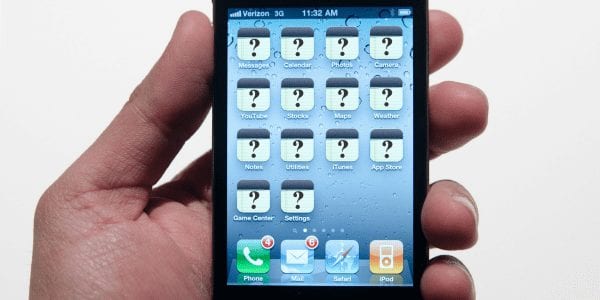5 Questions to Ask when Buying an MDM/EMM Solution

 How sophisticated is our mobile environment / strategy?
How sophisticated is our mobile environment / strategy?
Enterprise mobility has grown so rapidly over the past two years that mobile devices are becoming staples in everyday business processes that go beyond simple email and communication capabilities. Employees are accessing data and information through device centric formats and displays more and more, leaving that data more vulnerable to theft or loss. You need to understand how and at what level your organization is utilizing mobile devices.
As enterprise mobility has grown, so have the solutions that allow for mobility management. More and more technology firms are offering mobile solutions that include, but go beyond traditional MDM and address application management, content/data management and expense management wrapping all of these capabilities up into what the industry is referring to as Enterprise Mobility Management (EMM).
Reflect on the current status of your mobile environment and even look into the future. If your mobility management needs go beyond focusing on only the hardware and application and cost concerns that exist, than the more comprehensive EMM solution should be considered. While MDM will always be a pillar in the larger mobility solution it cannot offer all the security function needed to keep up with the growing sophistication of today’s enterprise mobility environments.
How will this new level of security and management impact employees?
As Bring Your Own Device (BYOD) programs grow and mobile strategies continue to mature, the line between personal and work life becomes increasingly blurry. Any level of enterprise mobility calls for security and management, and with that comes a view into what a device is doing, where it is located and what is stored on the device. Understandably, employee concerns around privacy crop up possibly leading to rejection of mobility programs or non-compliance around policy.
While this view into an employee life through their mobile device is almost unavoidable it certainly can and should be handled a certain way. Clear and understandable policies outlining both dos and don’ts as well the capabilities of IT through these management solutions need to be communicated plainly and undoubtedly. Employees will experience benefits, productivity and convenience through increased mobility however; those benefits will be outweighed by a feeling of loss of privacy if management is not handled correctly.
Do I have the internal IT resources to manage and maintain an MDM solution?
There is no arguing that most IT departments are spread thin already and adding a comprehensive enterprise mobility strategy to the mix will only compound their burden. Special aspects of your business may require special features. If you have employees who travel frequently, for instance, you may require a feature called Geo-fencing, which blocks or allows apps and access based on where that employee is on the globe. Also consider just whose devices you need to manage. Employees? CEOs? Students? Guests? Different kinds of end users will have different needs and present a variety of security risks, thus requiring different capabilities from an EMM solution.
IT will be responsible for securing devices, application and the data stored on both all the while keeping up with compliance needs and regulations such as PCI, HIPAA, HITCH and Sarbanes-Oxely. EMM solutions are meant to alleviate some of the management burden mobility brings, but first evaluate your internal team and understand what they can handle. EMM can save time, effort and money in the long run but if the right solution for you internal team and capabilities is not selected it can become clunky and cost prohibitive.
How will we ensure compliance and decrease risk?
Monitoring tools or asset tracking can help you maintain a certain level of compliance, but some of these functions are more reactive then proactive. Waivers, forms and policy agreements are typically needed before access to the network and corporate data is granted. To truly ensure compliance and policy integrity we believe that communication and education is the best policy. Through seminars, courses or information sessions you can clearly outline, define and reinforce policies and guidelines. By laying everything out on the table and communicating rules and regulations directly to the end users, you can feel better about there being a true understanding of you mobile policies.
What specification will our enterprise mobility policy entail and what MDM functions will we utilize?
Answering this question will provide the dos, don’ts and actual functions your mobile devices can perform. These security policies will be the backbone of your mobile strategy and have a major impact on the safety of your corporate data. You will want to look at and determine how each of these functions will impact your mobile strategy, data security and device utilization: Password policy control, device and data encryption, port control (Wi-Fi, Bluetooth, camera), remote lock/unlock/wipe, asset tracking, device configuration (VPN, email), application delivery and control, black/white listing and audit, monitoring and reporting.
Remember that your enterprise mobility policy should never be a “set it and forget it” task. The policy needs to be constantly monitored, tweaked and tailored to the current environment. We can almost ensure that your mobile strategy will mature over time as technology improves, as your employees become more tech savvy and the benefits of mobility are realized. The need for new and more comprehensive security and management solution will arise and your mobile policy will need to adapt and keep pace with all those changes.
Click here for the 5 questions you should ask MDM/EMM solution providers when evaluating solutions and access a free guide contain profiles of the leading MDM and EMM solutions in the market today.




















